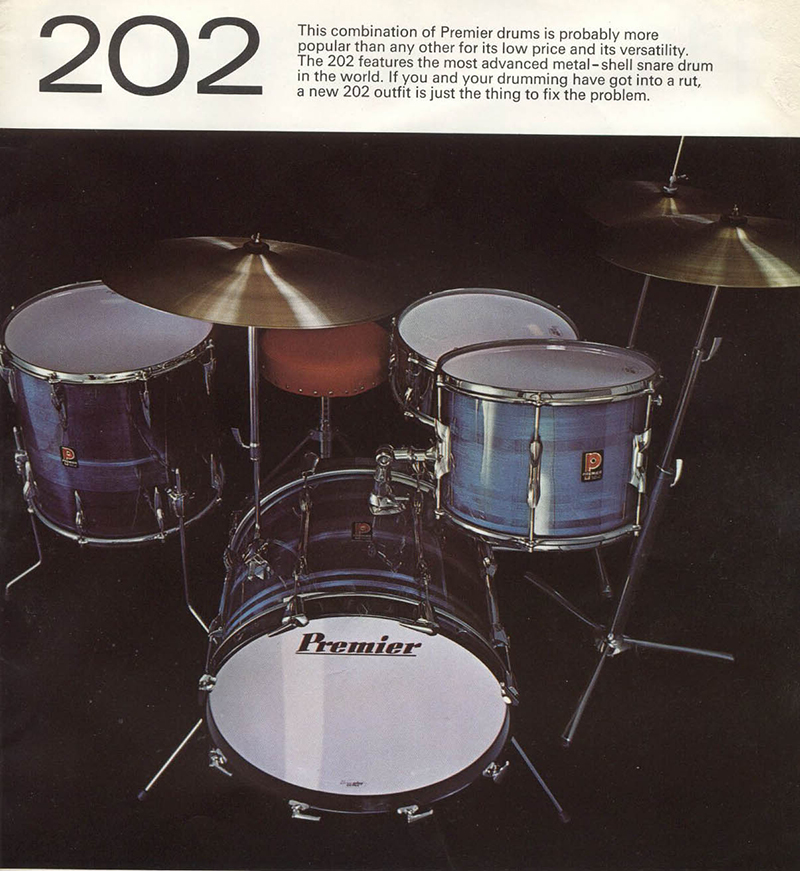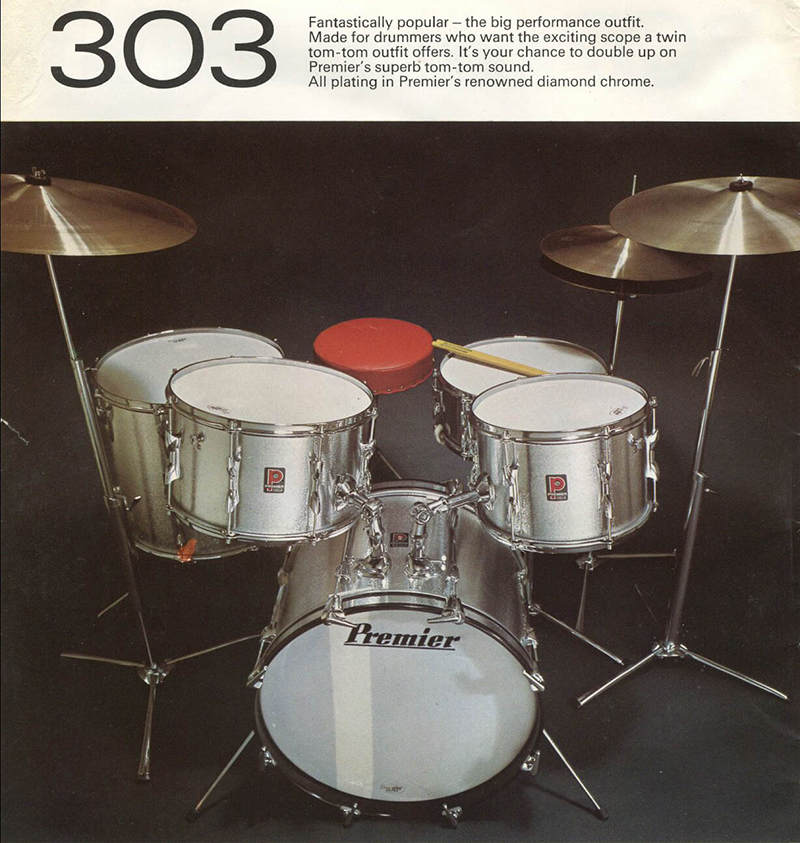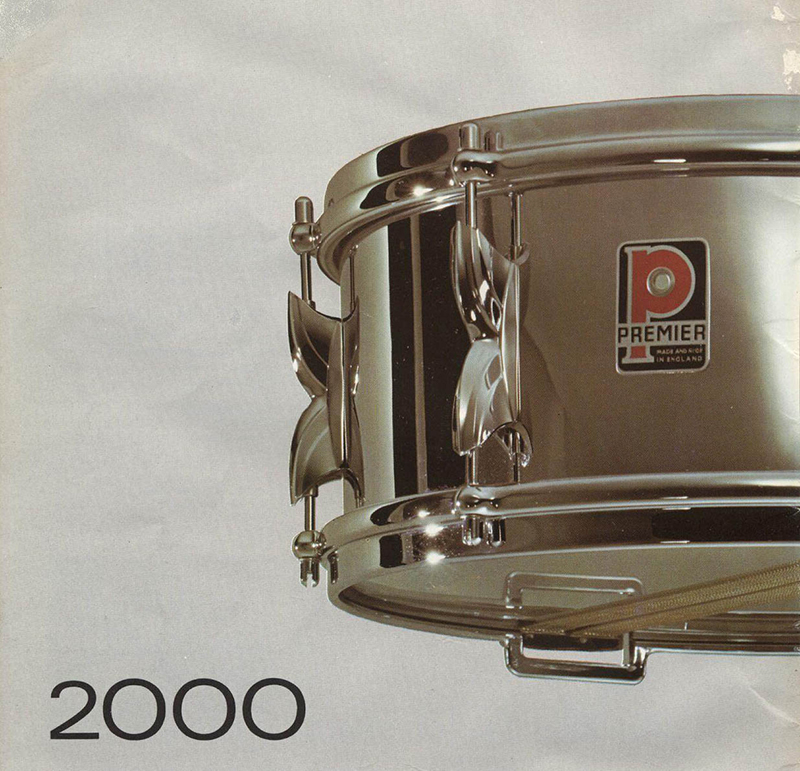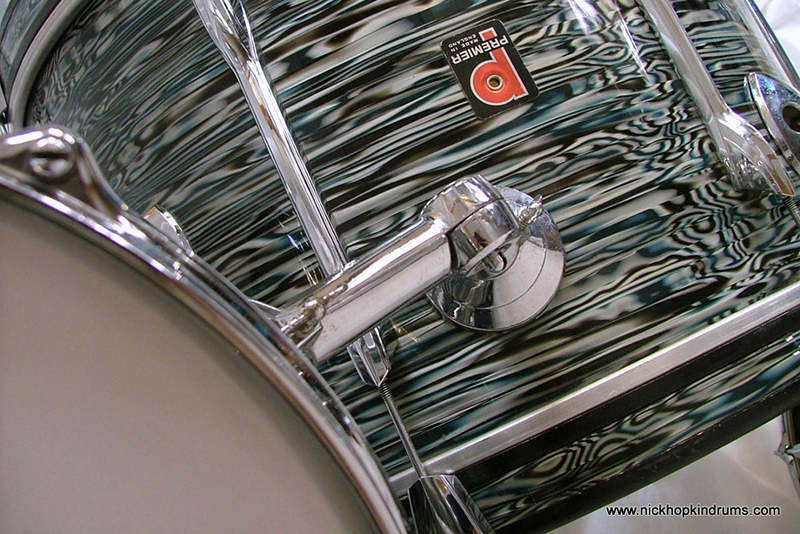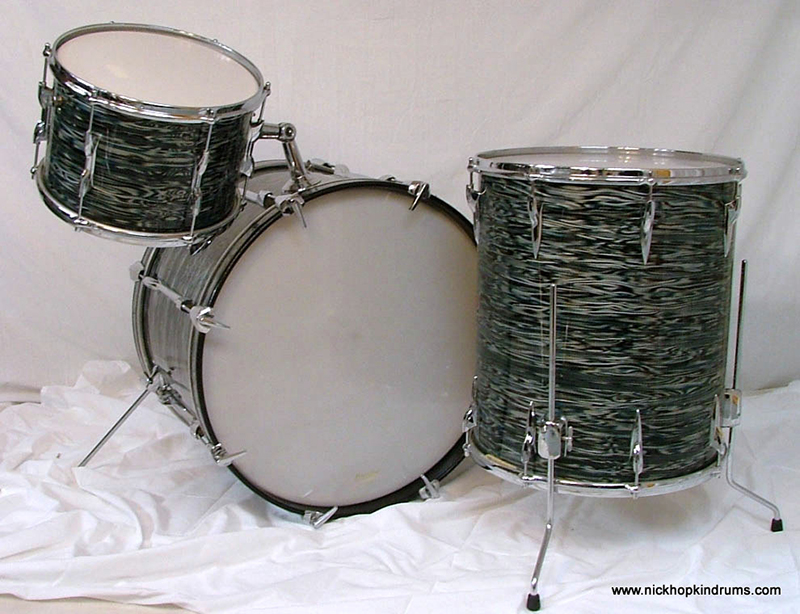In this and future articles, I’m looking at classic English vintage drums. There is a wealth of knowledge on American drums out there, but I find it difficult to find detailed information on even some of the most popular English drums. So here I’m just sharing observations on drums that come through my shop, supported by information in the original catalogues and other information I’ve come across. So let’s kick things off with the most famous English brand of drums, Premier, focusing on sets from the early 70s.
The few models from this period really marked a progression from the 1960s drums, in both sound and style. Sets from this period were given numbers – B111 (20, 12, 14), B202 (20, 13, 16), B303 (20, 12, 14, 16) and B707 (double bass drums).
While the 1960s and later 1970s shells were typically birch, drums from the early 1970s were mostly made of three-ply African mahogany. Producing an approximately 20% increase in low frequency resonance over maple drums, the perceived tone is much warmer.
All drums were cut with 45 degree bearing edges, featuring beech re-enforcement hoops (or glue rings). The shells were primarily international sized, although some sets typically had a pre- international sized floor tom where surplus shells were used up to complete sets.
The toms featured single sleek, self-aligning flush braced lugs placing no strain on the shell. Slot head rods with only a 6mm thread, meant the rods disappeared into the lug inserts leaving just the smooth shank of the rod visible, a lovely design touch that Premier kept for years but has sadly been lost on modern drums.
The tom mounts on these sets varied; some tom arms disappeared into both shells, some only one shell and some were fitted shell to shell (see pictures). The floor toms moved from 10 to 8 lugs and featured ‘Lock tight’ floor tom legs, a vast improvement to the spring loaded mounts from the 60s. All toms were fitted with ‘Tone Control’ dampers and streamlined die cast hoops, a sleeker shape than the earlier ‘beer barrel’ design.
The bass drums featured disappearing spurs, but with a sleeker design to their single lever tension rods. Sets left the Leicestershire factory in with a felt strip on each bass drum head.
Kits either came with the Hi-Fi snare drum (available in wood or metal, with a traditional strainer, most common in the brushed chrome finish) or the 2000 model (metal shell with parallel action ‘flobeam’ strainer). New colours and finishes were introduced, replacing the glitters and pearls of the previous decade – blue, grey and aquamarine shimmers; oyster; golden sun; Silver Star.
Unequalled, hand finished Chromium plated hardware accompanied these sets with the new ‘Lokfast’ stands and often a set of ‘5 Star Super Zyn’ cymbals.
Copyright Nick Hopkin 2014


